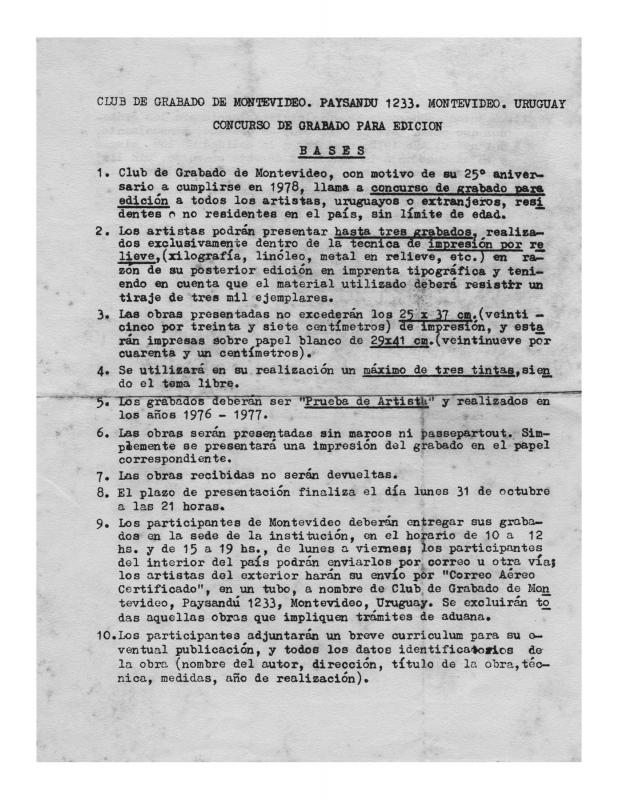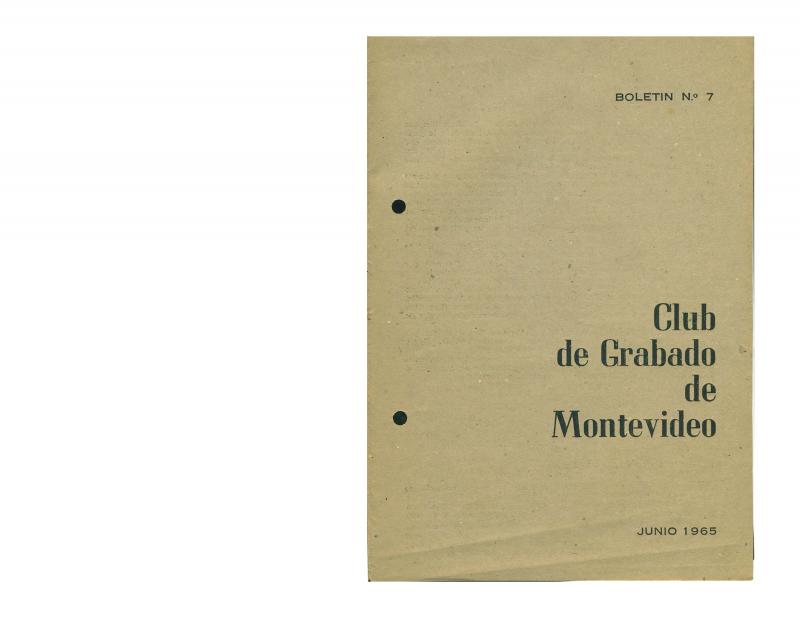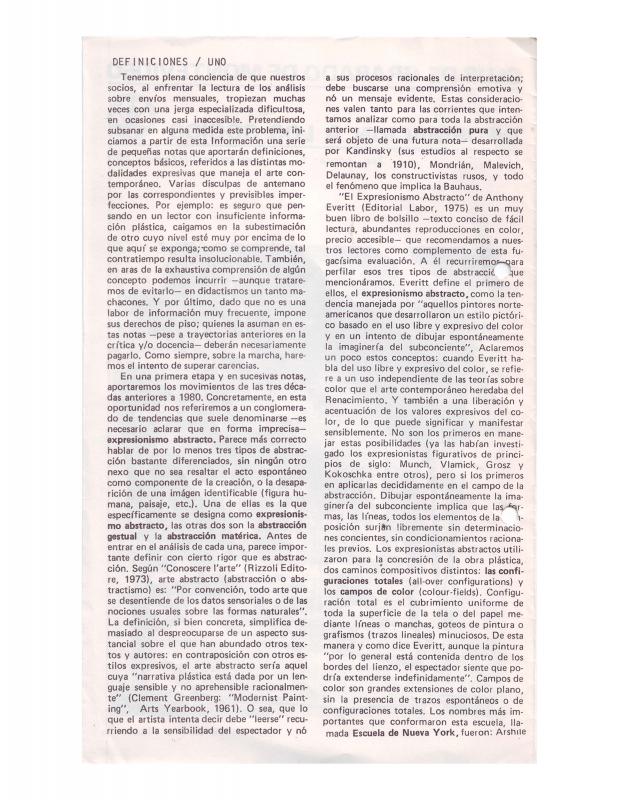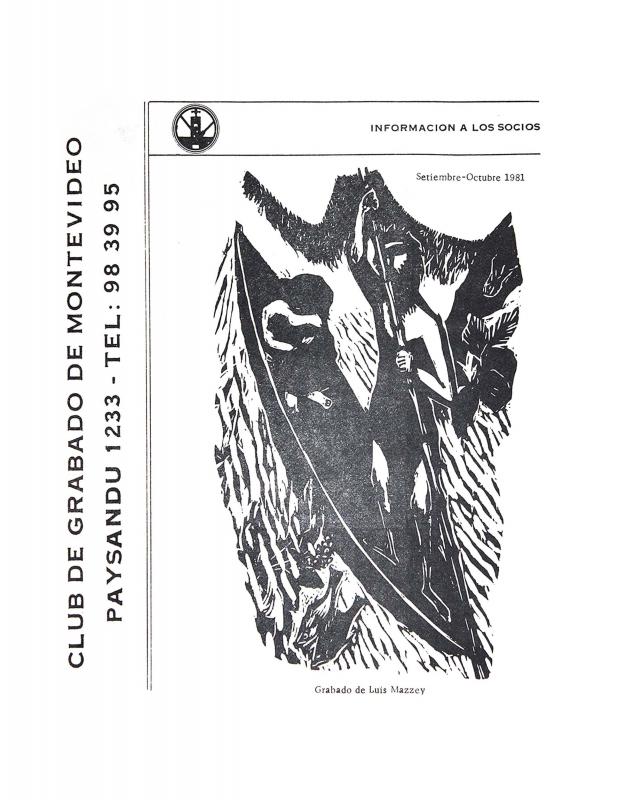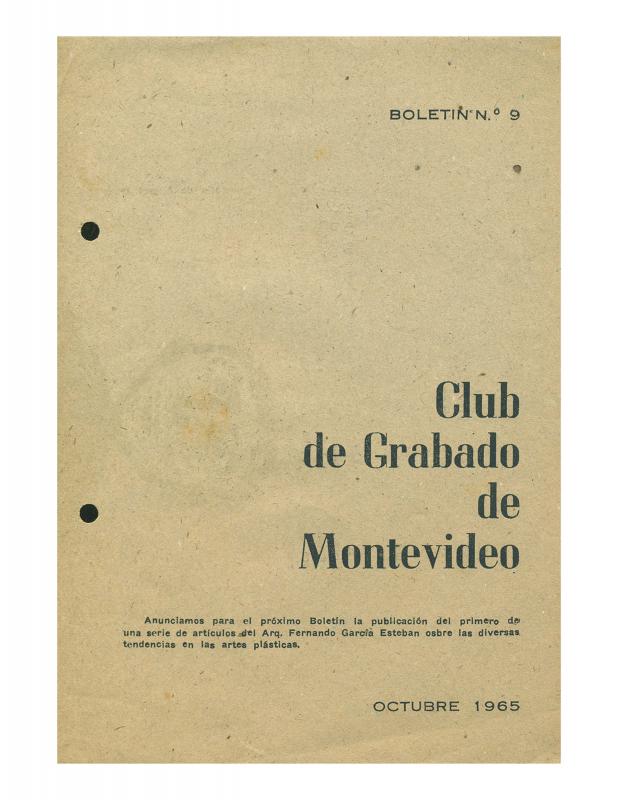José Pedro Argul (1903–74) explains that there are two groups in the field of printmaking: stamp prints, which strive for purity and perfection in techniques that are already known, and experimental prints that explore new stylistic trends and techniques. Argul prefers stamp prints, but understands and respects new efforts to experiment in the visual arts. The Tokyo Biennial—which tends to present a comprehensive view of contemporary art—asked him to select the Uruguayan representatives, on the understanding that the chosen artists did not necessarily have to work in the graphic arts. The organizers actually preferred painters and sculptors, since the event was not limited exclusively to stamp prints. The Uruguayan printmaker had chosen artists to represent Uruguay for the three previous Tokyo Biennials, as follows; 1960: Luis Mazzey (1895–1983); 1961: Leonilda González (1923–2017) and Fernando Cabezudo (1927–2014); 1962: Luis Camnitzer (b. 1937) and José Gamarra (b. 1934). For this 4th edition, he chose Margarita Mortarotti (1926–85), a prominent local printmaker who was well-known in Uruguay, and Ruisdael Suárez (1929–2004), whose works met with the approval of the Japanese organization because of his treatment of figuration, and who was awarded the Governor’s Prize. Argul assumes that Las hormigas was the print that clinched the prize, explaining that it “contradicted and liberated the viewer from being immersed in the dense maelstroms of abstract expressionism or the depths of informalism.” At that time, contemporary art was going through a series of rapid changes that required equally rapid liberations and technical differences. In 1964, the CGM (Club de Grabado de Montevideo, a member-supported association founded in 1953) started publishing its Boletines, or newsletters. Some were brochures, while others were simple fliers consisting of a single folded sheet of paper. These Boletines (which ceased to be published in 1975 and then reappeared in the 1980s) provided news about the association’s activities and reported on the changes taking place in the visual languages and the new serial techniques that circulated information about the aesthetic preferences of certain segments of Uruguayan society. These newsletters often undoubtedly contributed to the sociopolitical criticism that was in vogue at the time. [As complementary reading see, in the ICAA digital archive, the following texts published by the Club de Grabado de Montevideo: “Concurso de grabado para edición” (doc. no. 863481); “13 años de actividad de Club de Grabado de Montevideo” (doc. no. 1183571); “El arte correo en el Uruguay” (doc. no. 1191850); “Boletín N° 7 Club de Grabado de Montevideo” (doc. no. 1182833); “Club de Grabado compra su casa” (doc. no. 1192649); “Club de Grabado de Montevideo 22 Aniversario 1953 - Agosto 1975” (doc. no. 1183514); “Club de Grabado de Montevideo a la población de Montevideo” (doc. no. 1183124); “Cuando el Tercer Mundo se mira a sí mismo. II Bienal de La Habana” (doc. no. 1184459); “De los grabados de ayer a las ediciones actuales” (doc. no. 1191787); “Definiciones / Uno” (doc. no. 1189065); “Entrevista a Luis Mazzey” (doc. no. 1186991); “Entrevista a Óscar Ferrando” (doc. no. 1186747); “Entrevista a Óscar Ferrando [segunda parte]” (doc. no. 1186802); “Fundamentos a propósito de su 22 aniversario” (doc. no. 1182640); “Mini Grabado Internacional de Cadaqués. España” (doc. no. 1191135); “La necesidad de la imaginación” (doc. no. 1190793); “Nuestra institución” (doc. no. 1182010); “Los nuevos movimientos de las artes” (doc. no. 1182868); “Opiniones (I)” (doc. no. 1185411); “Palabras de clausura para un año de apertura” (doc. no. 1191167); “Referencias sobre identidad, cultura y arte en Latinoamérica” (doc. no. 1183641); “Reflexiones en torno a la supuesta crisis de las artes plásticas” (doc. no. 1185539); and “Sobre el papel de la crítica” (doc. no. 1187071)].

